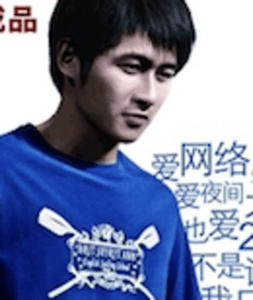What does it take to make a marketing campaign go viral through social media? Proctor & Gamble seems to have figured out the formula given their widely successful Old Spice deodorant campaign featuring Isaiah Mustafa – or have they? I think we are far from any marketer being able to claim that she or he has discovered the science behind viral marketing. However, we can look at successful examples such as Old Spice and others in China’s $38.5 billion plus e-commerce market to gain a better understanding of the qualities a successful campaign should embody.

Guest author Joel Backaler writes The China Observer, an award-winning blog focused on Chinese technology trends and consumer culture. His writing has appeared in and he has been quoted by the Wall Street Journal China Journal, Forbes, BusinessWeek, and Seeking Alpha. Joel is a Mandarin-speaking former Fulbright Fellow who has worked and lived in Taipei, Beijing and Singapore with Frontier Strategy Group. Follow Joel on Twitter.
One such example is the Chinese company VANCL, an online retailer that specializes in inexpensive quality clothing and accessories for the 18- to 28-year-old urban young adult consumer group. Like the Old Spice commercial, VANCL’s latest marketing campaign began in the real world, then transitioned into cyberspace, eliciting thousands of user-generated copycats. I’ll examine exactly how they did it in just a moment, but first we should look at the context in which VANCL operates in as well as their successful business model.
The Rise of E-Commerce in China
There are currently 420 million Internet users in China, with roughly half of this total comprised of the teenager to young-adult segment. While Chinese are often thought of as big savers, China’s young consumers are more willing than ever to use credit cards and shop in an increasingly secure online marketplace.
It is estimated that 140 million Chinese netizens will shop online by the end of 2010. This is resulting in a growing number of successful e-commerce companies that are winning market share not by trying to compete directly with e-commerce giants like Alibaba Group, but by developing models targeted at a particular niche (think Etsy). Over the course of this year, six such Chinese e-commerce companies have raised at least $180 million in venture capital investment.
What is VANCL?
VANCL is one of these major e-tailers in China raising money in the burgeoning e-commerce environment. In May 2010 the firm raised $50 million backed by a consortium of VCs including IDG Capital. VANCL was founded in 2007 by a Chinese e-commerce entrepreneur named Chen Nian. Chen’s previous company, Joyo, was acquired by Amazon, allowing him to take on a new challenge in China’s online retail space.
Since Chen founded VANCL in 2007, it has grown rapidly over the past three years – maximizing the opportunity presented by China’s online clothes shopping market, expected to reach RMB 30.87 billion with 81.5% year-on-year growth. A key determinant of VANCL’s great success is how it leverages a tremendous amount of online advertising to target urban young Chinese seeking distinctive stylish clothing at affordable prices.
Offline to Online Marketing: VANCL’s Successful Campaign
For the past few months, VANCL has stepped out into the real world of major Chinese cities like Shanghai and Beijing and is plastering billboard advertisements along the walls of bustling subway and bus stops.
There are two different advertisements that both follow a similar structure – one features a popular female actress named Wang Luodan and the other portrays a well-known public intellectual named Han Han. On the left of the poster is an image of the spokesperson wearing stylish VANCL clothes looking cool and collected, with a message on the right giving an introspective note about how they view themselves and the world around them.

Netizens responded to the simple but eye-catching advertisements by creating a group on a leading social network called Douban where they could create and share their own versions of the ads – and this is where the story gets controversial. While reports vary, some contend that the full campaign was user generated, while others contend that it was sparked by the agency that VANCL hired to run the campaign. Soon thousands of different versions popped up all over China’s most well-known social networks and BBS message boards, virally spreading across the nation.
How you too can go viral in China
As noted at the beginning of this article, there is no manual for creating a successful viral marketing campaign in China or in any other part of the world for that matter. Yet, I do believe that there are three characteristics of VANCL’s campaign that increased the likelihood of its “virality”:
Choose the right spokesperson. Just as few would argue that the Old Spice campaign would not have been as effective if a popular athlete was chosen instead of Mustafa, the first step that VANCL took in the right direction was choosing Wang Luodan and Han Han. These two prominent figures represent the generation VANCL seeks to sell its products to.
Choose a message your customers can relate to. The statements in the advertisements were a form of self-expression that potential customers could relate to. They highlighted relationships and feelings that they felt themselves but had no outlet through which to share it. This prompted people to express themselves through their own versions of the advertisement.
Choose a framework that is easy to replicate. While famous figures were featured, there was nothing complicated about the advertisement itself. All that was included was a photo and writing. Someone with the most limited Photoshop skills could easily create their own version of the advertisement as a means of self expression.










